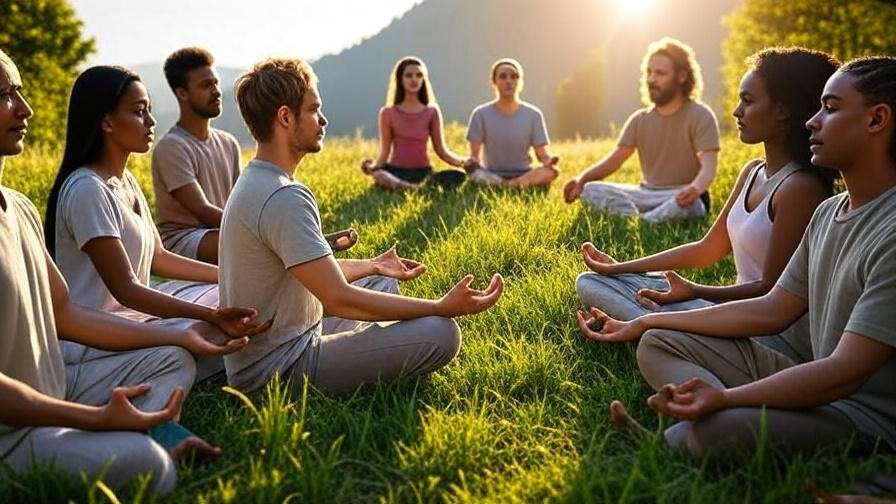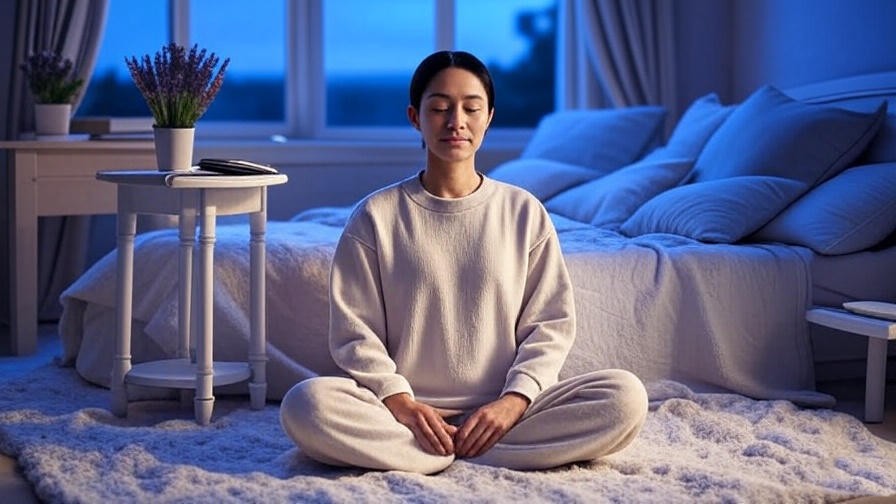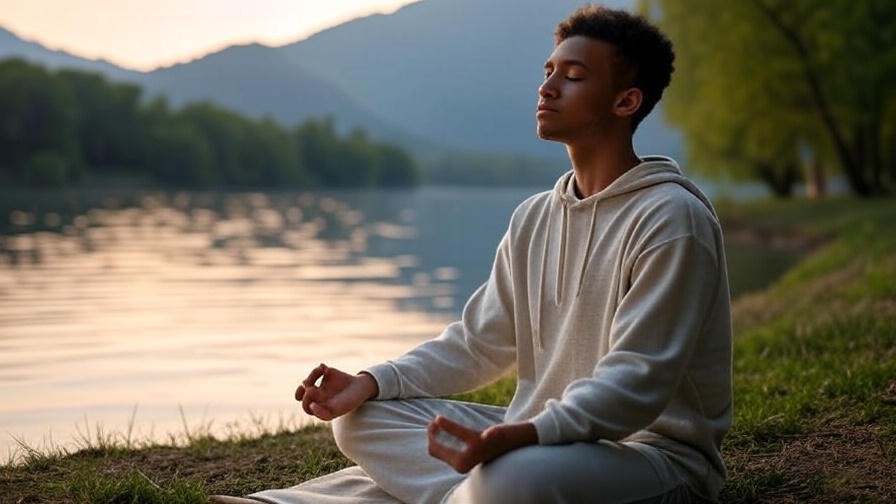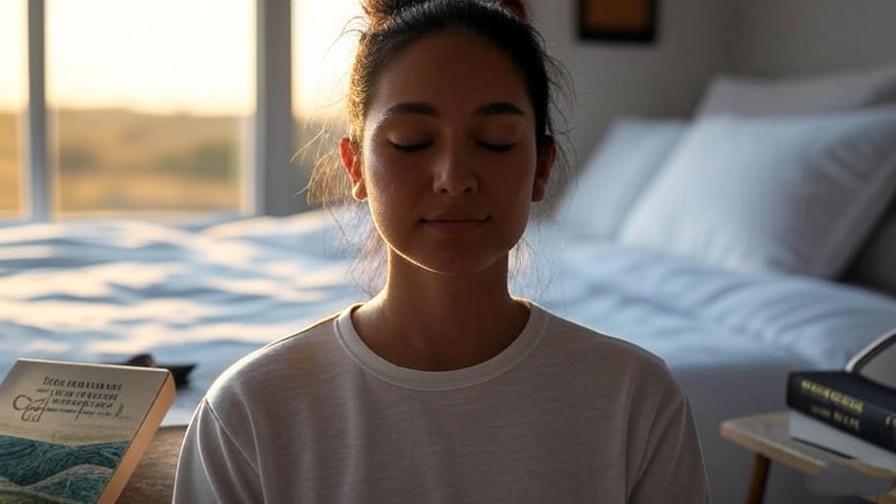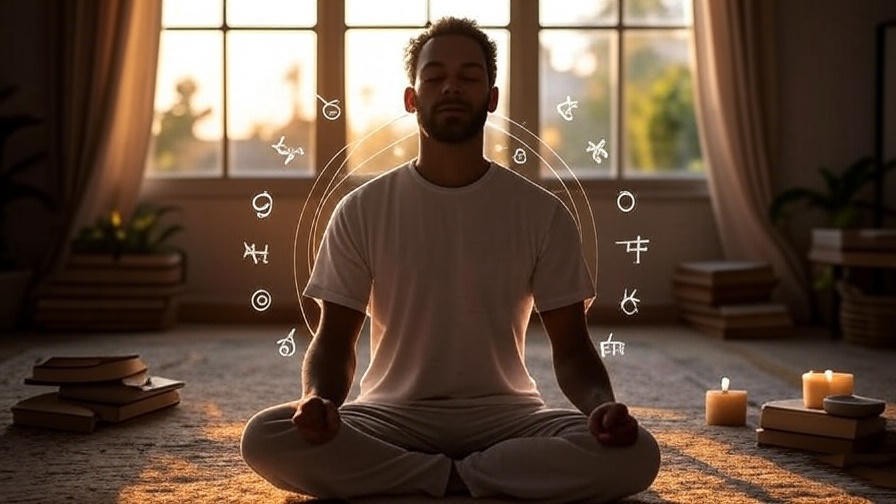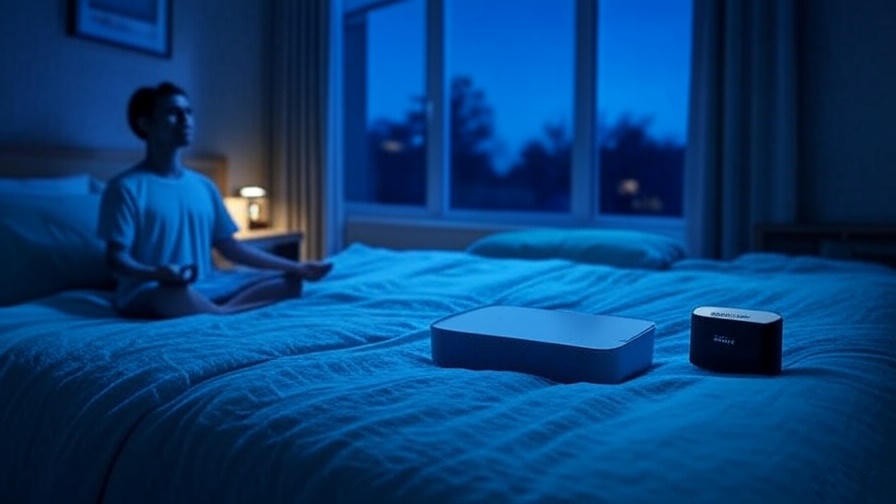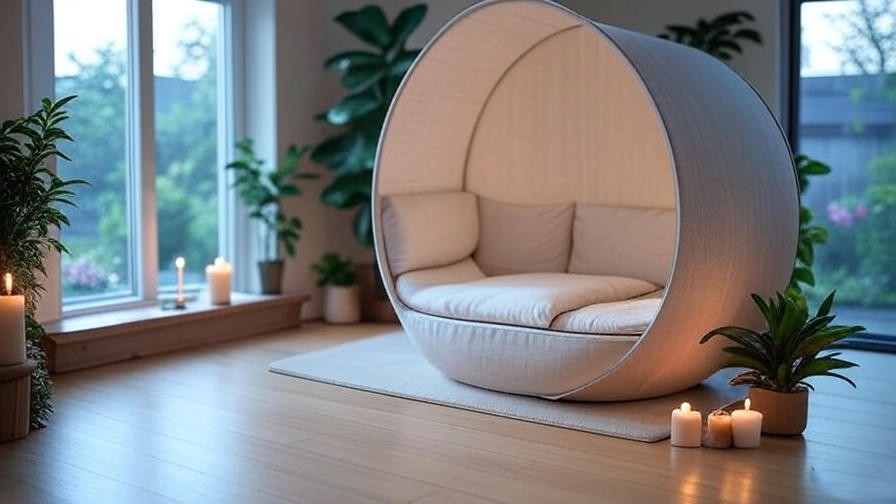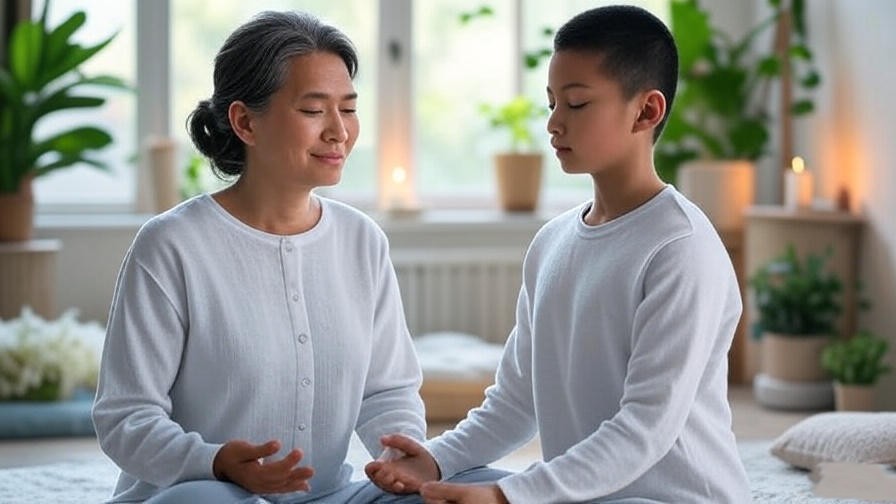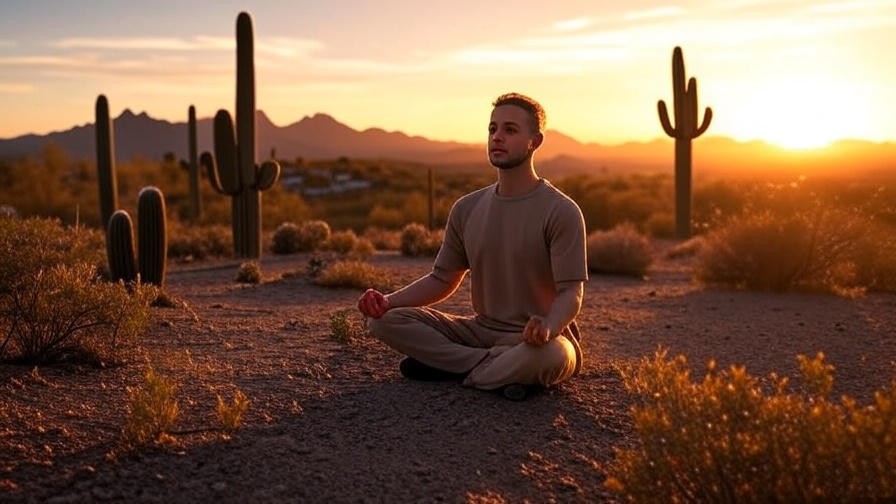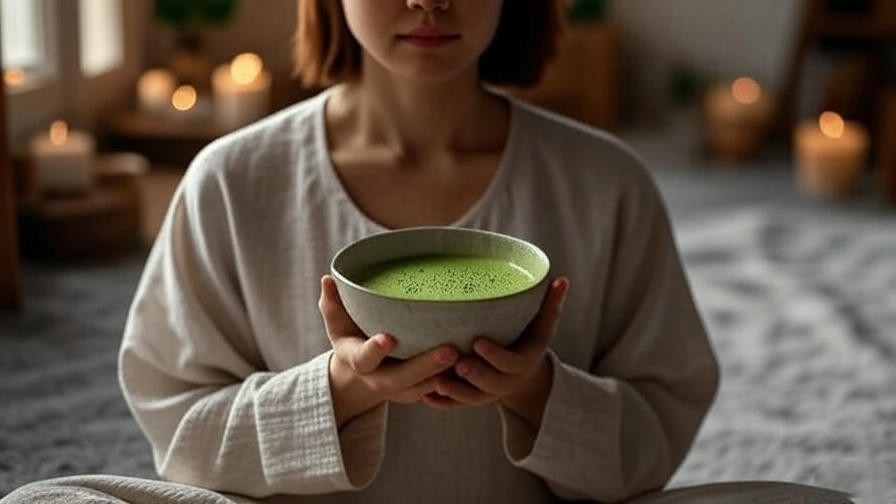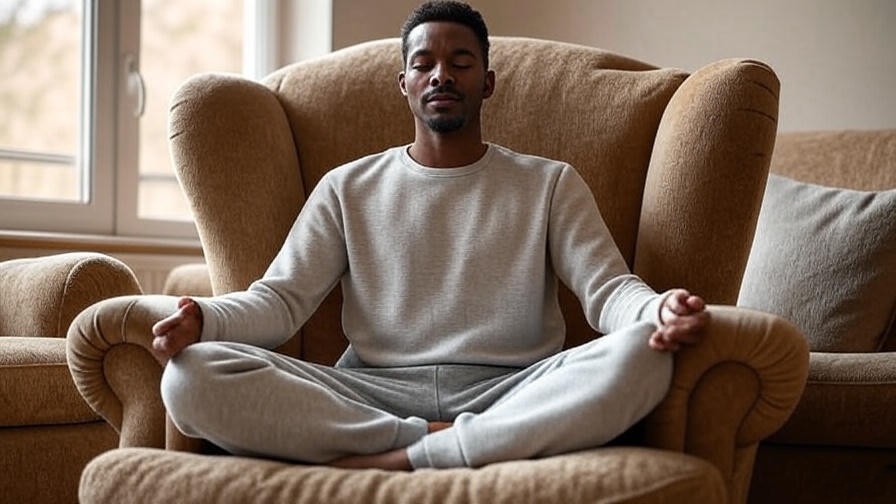Tossing and turning at night, your mind racing with endless thoughts—sound familiar? In today’s fast-paced world, finding calm amidst the chaos can feel impossible. Yet, a simple solution is gaining traction: the meditation circle. This communal practice brings people together to meditate, fostering peace, connection, and holistic well-being. As a mindfulness practitioner with over a decade of experience in holistic wellness, I’ve witnessed how meditation circles transform lives by improving sleep, reducing stress, and boosting happiness. Backed by science and real-world success, this guide will explore how joining or starting a meditation circle can unlock inner peace and elevate your well-being. Ready to discover a path to restful nights and brighter days? Let’s dive in.
What Is a Meditation Circle?

Defining the Meditation Circle
A meditation circle is a gathering of individuals who come together to meditate, often in a guided or silent format, creating a shared space for mindfulness. Unlike solo meditation, these circles harness the power of collective intention, amplifying the experience through group energy. They can take place in person—think cozy community centers or serene parks—or virtually via platforms like Zoom, making them accessible to all. Whether led by a facilitator or self-guided, meditation circles foster a sense of unity and purpose, helping participants achieve deeper relaxation and focus.
The History and Cultural Roots of Meditation Circles
Meditation circles have deep roots in ancient traditions. Buddhist sanghas, for instance, brought monks and laypeople together for communal meditation, emphasizing shared spiritual growth. Indigenous cultures worldwide have long used circle-based practices for healing and connection, from Native American talking circles to African tribal gatherings. Today, modern mindfulness movements have adapted these traditions, creating secular meditation circles that welcome diverse participants. This rich history underscores their universal appeal and effectiveness, making them relevant for anyone seeking wellness in our disconnected world.
Why Meditation Circles Are Unique
What sets meditation circles apart from solo practice? It’s the synergy of group dynamics. Research suggests that meditating in a group can enhance focus and emotional regulation, thanks to the collective energy and accountability. A 2018 study in Frontiers in Psychology found that group meditation increased feelings of social connectedness, which directly supports mental health. Unlike solitary sessions, circles provide a supportive environment where participants feel seen and encouraged, making it easier to stay consistent and experience profound benefits like better sleep and reduced stress.
The Science Behind Meditation Circles and Well-Being
How Meditation Circles Improve Sleep
Struggling with insomnia or restless nights? Meditation circles may hold the key. Group meditation promotes relaxation by calming the sympathetic nervous system, reducing cortisol levels, and preparing the body for restful sleep. A 2015 study published in JAMA Internal Medicine found that mindfulness-based practices, including group meditation, significantly improved sleep quality in adults with insomnia. The shared focus in a meditation circle helps quiet racing thoughts, making it easier to fall asleep and stay asleep. Participants often report waking up feeling refreshed, with fewer nighttime disturbances.
Mental Health Benefits
Beyond sleep, meditation circles offer powerful mental health benefits. The collective setting reduces feelings of isolation, a major contributor to anxiety and depression. A 2020 meta-analysis in Psychological Bulletin showed that group mindfulness practices lowered stress and improved emotional resilience. By meditating together, participants share an intention to heal, creating a ripple effect of calm. Experts like Dr. Jon Kabat-Zinn, founder of Mindfulness-Based Stress Reduction (MBSR), emphasize that group settings amplify mindfulness, helping individuals manage overwhelming emotions and find balance.
The Power of Collective Energy
There’s something magical about meditating in a group. The concept of collective consciousness suggests that shared intention can enhance individual experiences. The HeartMath Institute’s research on group coherence demonstrates that synchronized heart rhythms during group activities like meditation create a measurable energetic field, boosting relaxation and emotional clarity. Participants often describe feeling “uplifted” or “energized” in a meditation circle, as the group’s focus amplifies their own. This phenomenon explains why many report deeper meditative states in a circle compared to solo practice.
Expert Tip: “The energy in a meditation circle is palpable,” says Sarah Thompson, a certified mindfulness instructor with 15 years of experience. “It’s like tuning into a shared frequency of calm, making it easier to let go of stress and connect with your inner peace.”
How Meditation Circles Enhance Holistic Well-Being
Boosting Happiness and Emotional Resilience
Meditation circles do more than calm the mind—they spark joy. Regular participation increases serotonin and dopamine, neurotransmitters linked to happiness, according to a 2017 study in Neuroscience Letters. The group setting fosters a sense of belonging, which psychologists say is critical for emotional resilience. By sharing space with others, participants build a positive feedback loop of mindfulness and connection, leading to lasting mood improvements. Whether you’re navigating life’s challenges or seeking everyday joy, meditation circles offer a nurturing environment to thrive.
Building Community and Connection
In an era of digital disconnection, meditation circles provide a rare opportunity to build community. Loneliness, a growing public health concern, can exacerbate stress and sleep issues. Group meditation counters this by fostering meaningful connections. For example, Lisa, a 34-year-old teacher, joined a local meditation circle and found not only better sleep but also lifelong friends who shared her wellness goals. These circles create safe spaces where participants can be vulnerable, share experiences, and feel supported, enhancing overall well-being.
Supporting Physical Health
The benefits extend to the body, too. Group meditation has been linked to lower blood pressure, improved immune function, and reduced chronic pain. A 2019 study in The Journal of Alternative and Complementary Medicine found that participants in group mindfulness programs reported significant reductions in pain intensity. By lowering stress hormones, meditation circles help the body heal naturally. Whether you’re managing a chronic condition or seeking preventive care, the holistic impact of these gatherings is undeniable.
Who Can Benefit from a Meditation Circle?
Beginners to Advanced Practitioners
Meditation circles are for everyone, regardless of experience. Beginners benefit from guided sessions and the group’s supportive energy, which eases them into mindfulness. Seasoned meditators, meanwhile, find deeper focus and new perspectives through shared practice. “I thought I preferred solo meditation,” says Mark, a 45-year-old software engineer, “but joining a circle helped me break through a plateau in my practice.” The inclusive nature of circles ensures that all participants, from novices to experts, leave feeling enriched.
Specific Groups and Needs
Meditation circles cater to diverse needs. Busy professionals can unwind from high-pressure days, parents find moments of calm amidst chaos, and students gain tools to manage academic stress. Those with sleep disorders, like insomnia or sleep apnea, often see improvements through regular practice. Virtual circles make participation accessible for remote or mobility-limited individuals, ensuring no one is left out. Whatever your lifestyle or challenges, a meditation circle can be tailored to support your wellness journey.
How to Join or Start a Meditation Circle
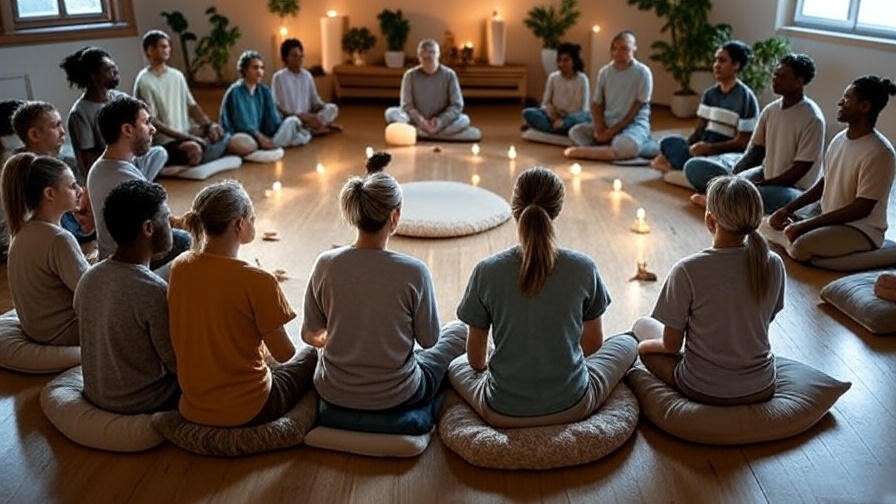
Finding a Meditation Circle Near You
Ready to experience the benefits of a meditation circle? Finding one is easier than you might think. Start by exploring online platforms like Meetup or Eventbrite, which list local and virtual meditation groups. Local wellness centers, yoga studios, or community centers often host weekly circles—check their schedules or bulletin boards. For those preferring flexibility, virtual meditation circles on platforms like Zoom or Insight Timer offer guided sessions from the comfort of home. Search terms like “meditation circle near me” or “online mindfulness group” to discover options tailored to your location or schedule.
- Pro Tip: Use apps like Insight Timer to find free or low-cost virtual circles led by experienced facilitators. Filter by time zone to ensure convenience.
Starting Your Own Meditation Circle
If you can’t find a local group or prefer a personalized experience, starting your own meditation circle is a rewarding option. Here’s a step-by-step guide to get started:
- Set Your Intention: Decide the purpose of your circle—stress relief, better sleep, or spiritual growth—and communicate this clearly to attract like-minded participants.
- Choose a Format: Opt for in-person (e.g., at a community center or home) or virtual (via Zoom or Google Meet). In-person fosters deeper connection, while virtual offers accessibility.
- Create a Welcoming Space: For in-person circles, arrange seating in a circle with cushions or chairs, dim lighting, and minimal distractions. For virtual circles, ensure a reliable platform and clear audio.
- Plan the Session: Decide whether it’s guided (using an app or script) or silent. Beginners often prefer guided sessions with calming music or prompts.
- Invite Participants: Start small with friends, family, or colleagues, and expand through social media or community boards. Emphasize inclusivity—no experience required.
- Set Ground Rules: Encourage respect, confidentiality, and openness to create a safe space for all.
Tools and Resources for Success
To enhance your meditation circle, leverage tools and resources designed for mindfulness. Apps like Calm, Headspace, or Insight Timer offer guided meditations tailored for groups, with themes like sleep or stress relief. For in-person sessions, invest in affordable props like meditation cushions, blankets, or a small speaker for soothing music. Websites like Mindful.org provide free scripts and tips for facilitators. If you’re new to leading, consider enrolling in a mindfulness course (e.g., MBSR certification) to build confidence and expertise.
Expert Tip: Use this checklist to ensure a successful meditation circle:
- Confirm the time and platform (in-person or virtual).
- Prepare a 5–10-minute guided meditation or select one from a trusted app.
- Create a welcoming atmosphere with calming music or aromatherapy (if in-person).
- Encourage participants to share intentions or reflections (optional) to foster connection.
Practical Tips for Maximizing Your Meditation Circle Experience

Preparing for a Session
To get the most out of a meditation circle, preparation is key. Before attending, set a clear intention—whether it’s better sleep, stress relief, or emotional clarity. Arrive early (or log in early for virtual sessions) to settle in and minimize distractions. Wear comfortable clothing and, for in-person circles, bring a cushion or mat for comfort. At home, create a quiet space free from phones or interruptions. A simple pre-session ritual, like deep breathing or sipping herbal tea, can help you transition into a mindful state.
Overcoming Common Challenges
New to meditation circles? You might face hurdles like restlessness, skepticism, or difficulty focusing in a group. These are normal and surmountable. If your mind wanders, gently refocus on your breath or the facilitator’s guidance. Skeptical about group energy? Approach it with curiosity—many skeptics become converts after one session. For group settings, earplugs or focusing on your breath can help tune out distractions like rustling or coughing. Beginners can start with short, 10-minute sessions to build comfort and confidence.
- Quick Fix: Try a simple breathwork technique: inhale for 4 seconds, hold for 4, exhale for 6. This calms the nervous system and eases you into the group experience.
Integrating Meditation Circles into Your Routine
Consistency is key to reaping the benefits of meditation circles. Aim for weekly sessions to build a habit, though even monthly participation can make a difference. Complement your practice with solo mindfulness activities, like journaling about your experiences or practicing yoga to enhance flexibility and relaxation. A sample weekly schedule might look like this:
- Monday: 10-minute solo meditation to set intentions.
- Wednesday: Attend a 30-minute meditation circle (virtual or in-person).
- Friday: Reflect on your week with a gratitude journal.
- Sunday: Practice a 15-minute yoga flow to support mindfulness.
By weaving meditation circles into your routine, you’ll notice cumulative benefits like deeper sleep, reduced anxiety, and greater emotional balance.
Real-Life Success Stories

Sarah’s Journey to Better Sleep
Sarah, a 38-year-old marketing manager, struggled with insomnia for years due to work stress. She joined a local meditation circle on a friend’s recommendation. Initially hesitant, she found the group’s calming energy transformative. After three weeks of weekly sessions, Sarah reported falling asleep within 15 minutes—a stark contrast to her usual hour-long battle. “The circle gave me a sense of peace I couldn’t find alone,” she says. Her story highlights how group meditation can address chronic sleep issues.
James Finds Community
James, a 50-year-old retiree, felt isolated after moving to a new city. Joining a virtual meditation circle through Insight Timer changed that. The weekly sessions not only reduced his anxiety but also connected him with a supportive community. “I went from feeling alone to having a group of friends who care about my well-being,” he shares. James’s experience underscores the power of meditation circles in combating loneliness.
Priya’s Path to Happiness
Priya, a 25-year-old student, joined a campus meditation circle to manage exam stress. The group’s guided sessions helped her stay grounded, and she noticed a boost in her mood and focus. “I didn’t realize how much I needed that connection,” she says. Within two months, Priya felt more optimistic and resilient, proving meditation circles’ impact on emotional well-being.
Frequently Asked Questions (FAQs)
Do I Need Meditation Experience to Join a Meditation Circle?
No experience is required! Most meditation circles welcome beginners, offering guided sessions to ease you into the practice. Facilitators often provide clear instructions, and the group’s energy helps newcomers feel supported. Start with a beginner-friendly circle to build confidence.
Can Meditation Circles Help with Chronic Insomnia?
Yes, research supports this. A 2015 study in JAMA Internal Medicine found that mindfulness-based group practices improved sleep quality for those with chronic insomnia. The calming effect of group meditation reduces stress hormones, helping you fall asleep faster and stay asleep longer.
Are Virtual Meditation Circles as Effective as In-Person Ones?
Both formats are effective, though they offer different benefits. In-person circles foster deeper connection through physical presence, while virtual circles provide accessibility and flexibility. A 2021 study in Mindfulness found that virtual mindfulness groups significantly reduced stress, making them a viable option for busy or remote participants.
How Often Should I Attend a Meditation Circle?
Weekly sessions are ideal for building consistency and maximizing benefits like better sleep and stress relief. However, even monthly participation can improve well-being. Experiment to find a frequency that fits your schedule and goals.
What Should I Bring to a Meditation Circle?
For in-person circles, bring a cushion, mat, or blanket for comfort. Wear loose, comfortable clothing. For virtual sessions, ensure a quiet space and reliable internet. A journal to reflect on your experience can enhance mindfulness.
Can Meditation Circles Help with Anxiety?
Absolutely. Group meditation reduces anxiety by fostering a sense of community and calming the nervous system. A 2020 study in Psychological Bulletin confirmed that group mindfulness practices significantly lower anxiety levels, making circles a powerful tool for mental health.
Conclusion
Meditation circles offer a transformative path to better sleep, reduced stress, and enhanced well-being. By harnessing the power of collective mindfulness, these gatherings create a supportive space to find inner peace and build community. Whether you’re a beginner or a seasoned practitioner, joining or starting a meditation circle can unlock profound benefits for your mind, body, and spirit. Take the first step today: search for a local or virtual circle, or gather friends to create your own. Your journey to restful nights and brighter days starts now. Share your experiences in the comments or on social media—let’s inspire each other to thrive!

